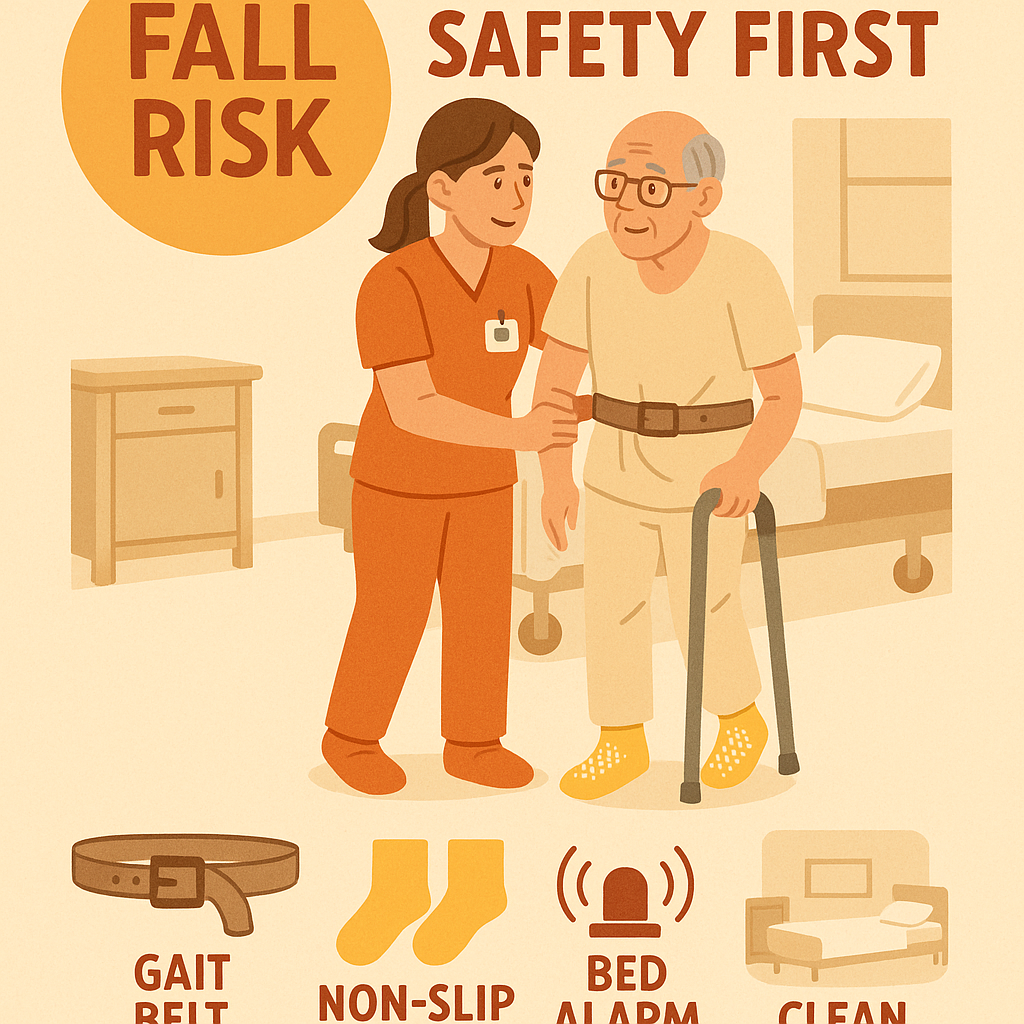Patient falls are one of the most common safety issues every nurse faces in hospitals, long-term care, and home health settings. Because of this, preventing falls is a basic part of daily nursing practice, and it’s also a major topic on the NCLEX.
Whether you’re a new registered nurse, an RN nurse with years of experience, or using a nursing bundle to review key topics, this guide will help you understand how to keep your patients safe and confident in your care.
📌 Why Fall Precautions Matter
To begin with, falls can cause serious injuries, longer hospital stays, and additional costs. In many cases, even a simple fall can break bones or lead to further complications. Therefore, as a nurse, preventing falls is not just important — it’s part of your patient care responsibility. Ultimately, it protects both your patients and your license.
🗂️ Who Is at Risk for Falls?
Generally, patients with the following conditions are at higher risk:
- Weak muscles or poor balance
- Medications that cause drowsiness or dizziness
- Confusion, dementia, or poor vision
- Recent surgery or injury
- Urinary urgency or incontinence
By identifying your patient’s risk factors early, you can plan the right safety interventions before an accident happens.
✅ Fall Precautions Checklist
Here’s a simple checklist every RN nurse and nursing student should use:
1️⃣ Assess Fall Risk
First, use a fall risk tool such as the Morse Fall Scale or Hendrich II.
Next, assess at admission, after any change in status, and after a fall.
In addition, look for high-risk signs like a history of falls, confusion, or use of assistive devices.
2️⃣ Keep the Environment Safe
To reduce hazards, always keep the bed in the lowest position with brakes locked.
Furthermore, remove clutter and cords from walkways.
Also, make sure floors are dry and well-lit, and use non-slip socks or shoes.
3️⃣ Use Bed Alarms and Call Lights
Whenever possible, place the call light and personal items within easy reach.
Then, teach the patient how to use the call light and remind them to ask for help.
For high-risk patients, bed or chair alarms can provide an extra layer of safety.
4️⃣ Apply Proper Safety Equipment
When appropriate, use bed rails as ordered — but remember, not all patients need four side rails, as this can be considered a restraint.
Likewise, use gait belts for ambulation if needed and ensure assistive devices (walker, cane) are used correctly.
5️⃣ Educate the Patient and Family
Moreover, explain why each safety step is important.
Encourage family members to stay with the patient when possible.
Above all, remind the patient to ask for help before going to the bathroom.
6️⃣ Check on High-Risk Patients Frequently
In addition to assessment, round every hour if necessary.
Offer toileting assistance regularly, and continuously reassess mobility status.
7️⃣ Document and Report
Finally, document the fall risk score, interventions, and patient understanding.
Be sure to report any status changes to your charge nurse or healthcare team promptly.
🎓 Tips for NCLEX and Nursing Practice
✅ Know your protocols: The NCLEX frequently includes questions about patient safety and fall prevention.
✅ Always prioritize safety: If you notice clutter, spills, or obstacles — fix them immediately.
✅ Use your nursing bundle: Review fall risk tools, bed safety guidelines, and restraint policies regularly to stay prepared.
🗝️ Key Takeaway
In summary, preventing falls is a daily responsibility for every registered nurse. By recognizing who is at risk and applying proper safety tools, you keep patients secure and build confidence in your nursing practice. Ultimately, mastering these precautions helps you provide safer care, succeed on the NCLEX, and uphold the professional standards expected of every RN nurse.

